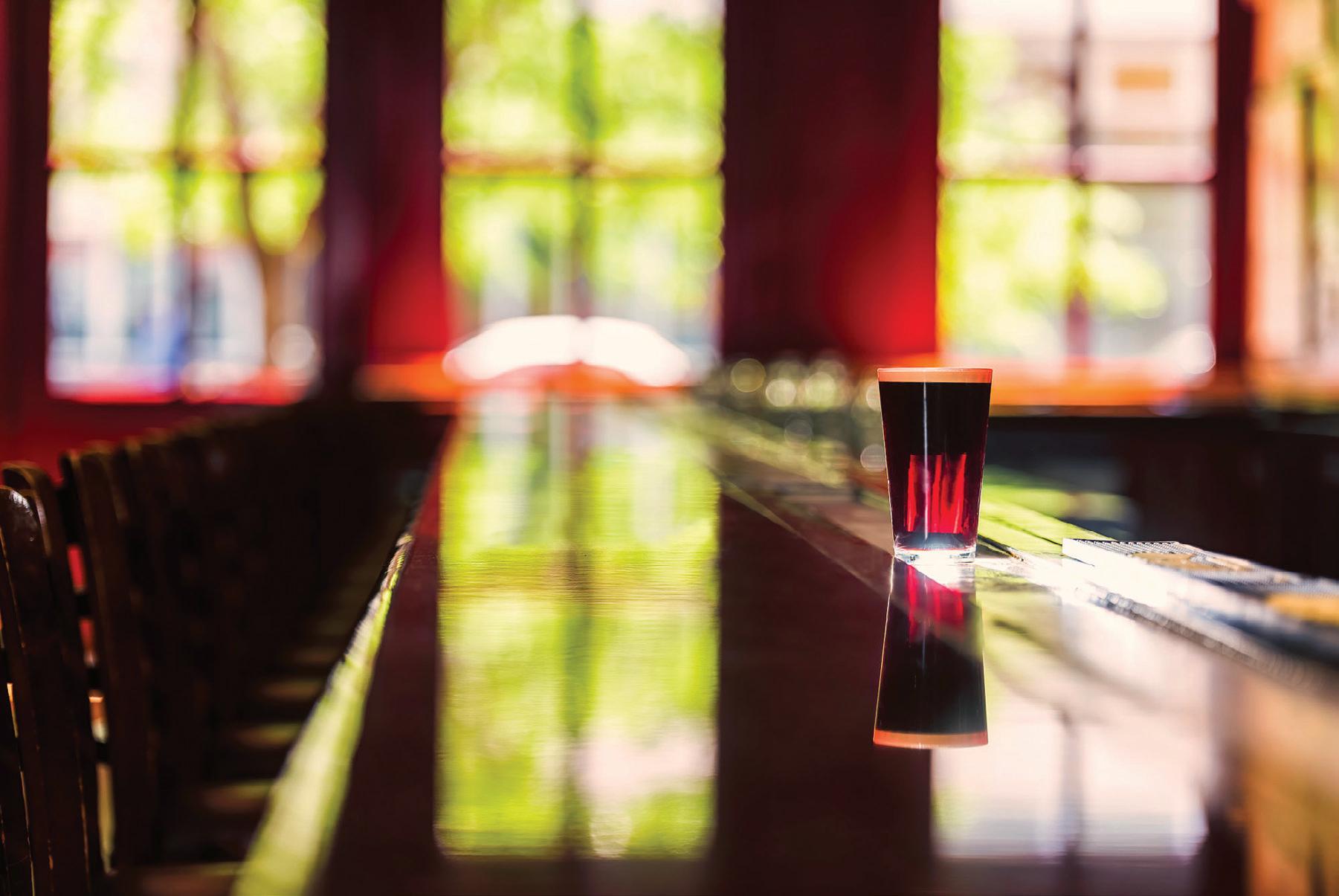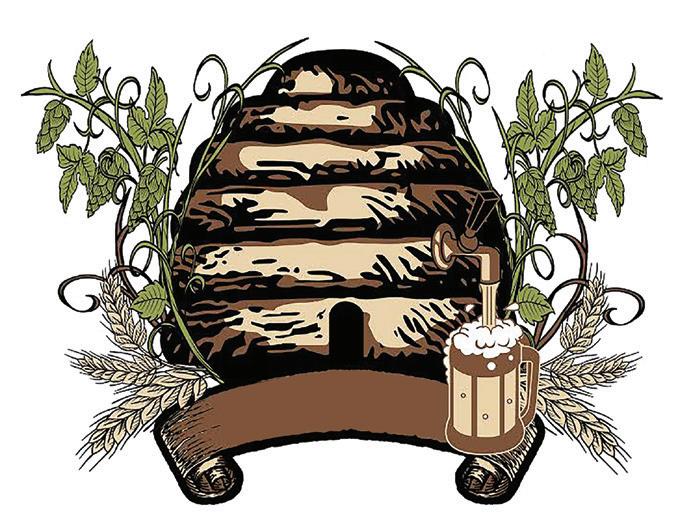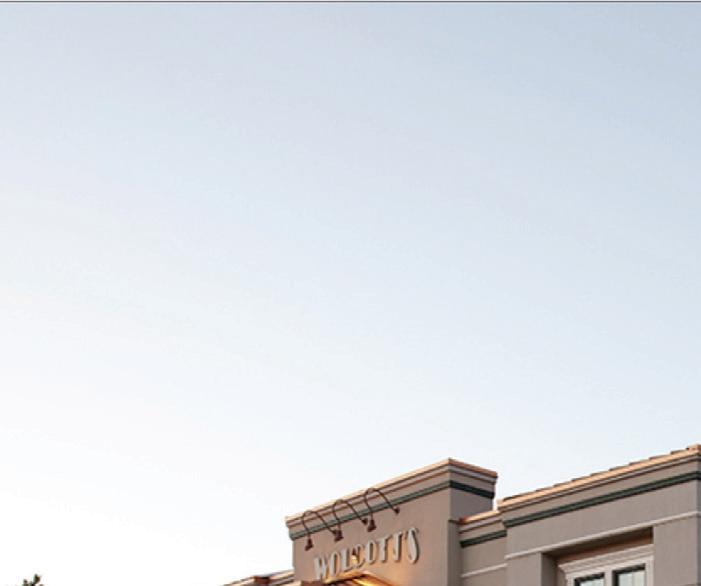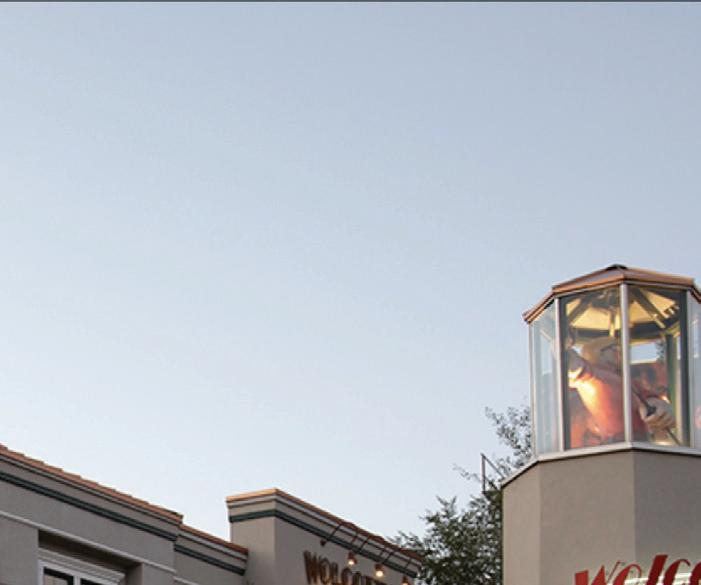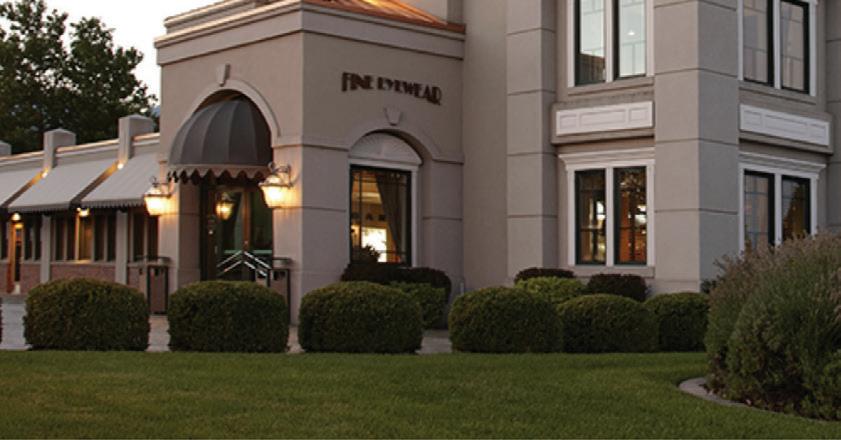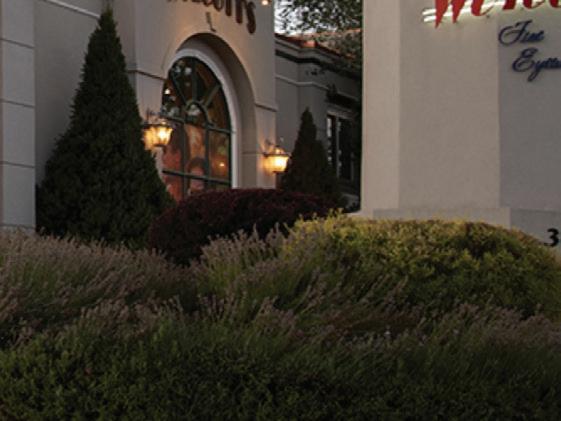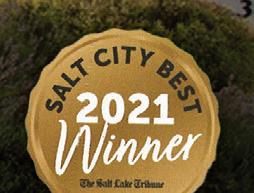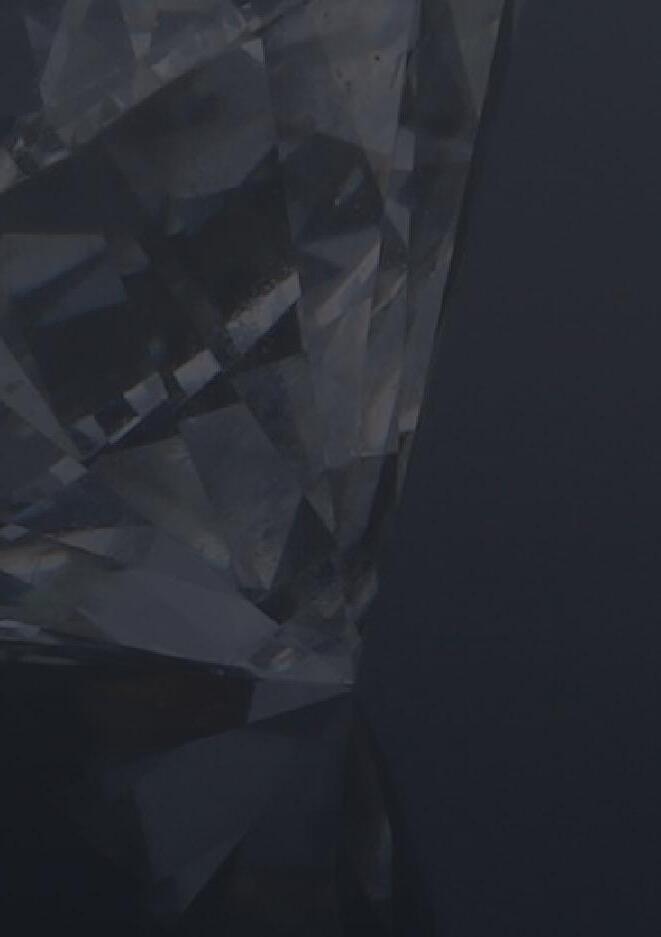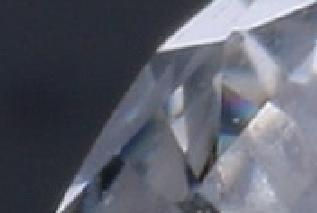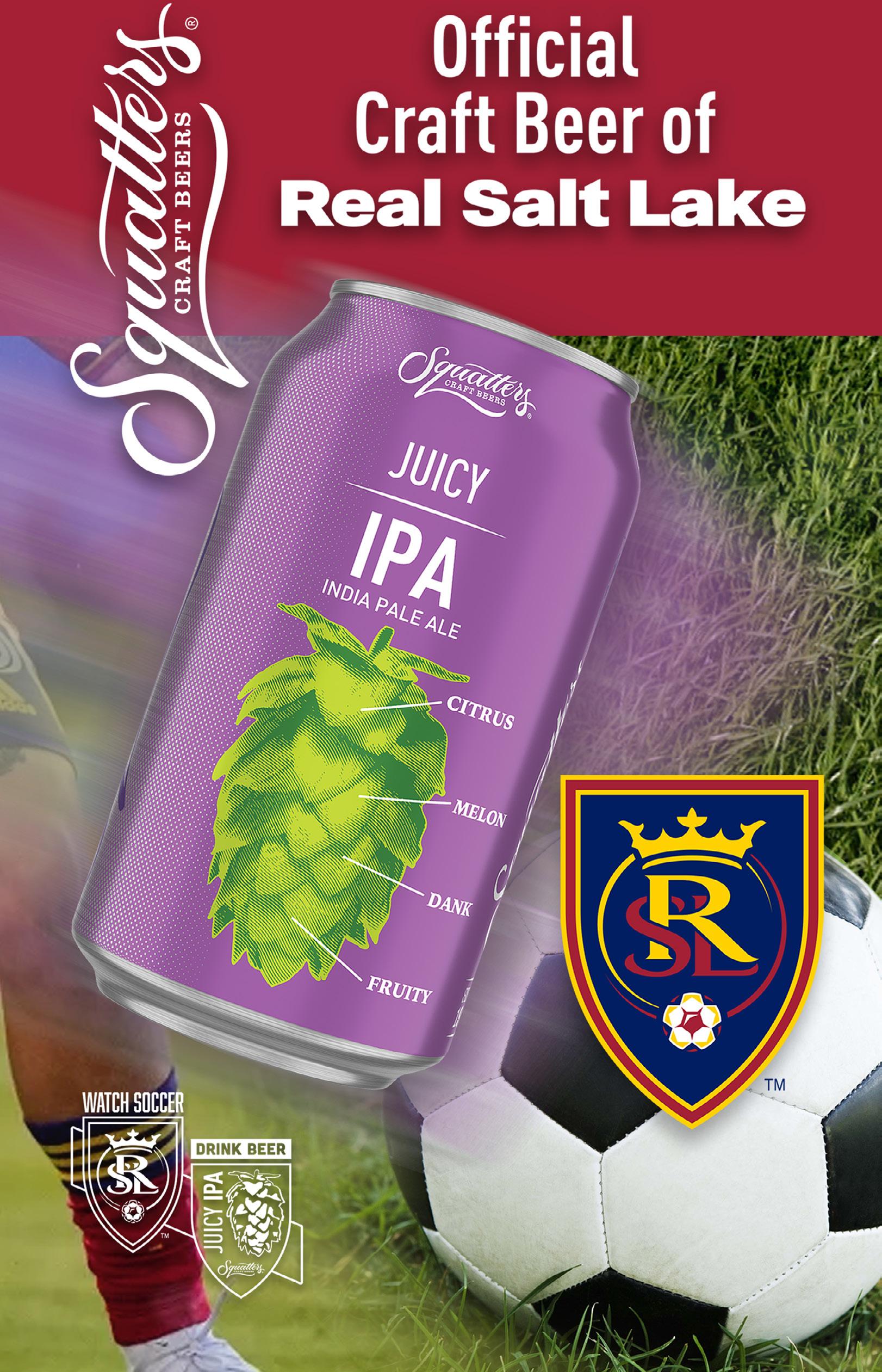




























































Amanda Rock is a freelance vegan food writer. She’s been published in Utah Stories, SLUG Magazine, Salt Lake City Weekly, and Devour Utah. She lives in an old house in Murray, Utah with her husband, a black cat, and many books. Find her on Twitter, @hauntedherbivor and Instagram, @the_haunted_herbivore.


Cathy McKitrick discovered her love of storytelling in midlife, graduating from Weber State University in 1998 with a journalism degree in hand.
She covered local government for the Standard-Examiner until 2005, when she was hired by the Salt Lake Tribune. During that eight-year adventure, she covered local and state government, poverty, homelessness, the opioid overdose crisis, and more.
Following a mass layoff, she returned to the StandardExaminer in 2013, again covering local government, opioid overdoses, cannabis and other health care issues.
Cathy retired from the Standard-Examiner in April 2018, but her passion for journalism remains intact. She now freelances and serves on the board of the Utah Investigative Journalism Project.

In her spare time, this grandma enjoys a leisurely run, a good laugh, and catching up with family and friends.
She can be found on Facebook at https://www.facebook.com/cathy.mckitrick.7, and Twitter at @catmck.
Robyn Morris Christensen grew up on a cattle ranch in southeastern Idaho. In junior high, her family moved to Utah, where she has lived for nearly ten years. She attended high school in Cache Valley before moving to Provo where she pursued a degree in Journalism from Brigham Young University and graduated in 2023. While in college, Robyn worked as a video reporter for the Daily Universe. She loves storytelling, the many different formats it can come in, and how it connects people. Robyn loves to spend time outside with her husband and her two children, ages 3 and 1. A voracious reader, you’ll always find Robyn with a book nearby, and she carries her current read with her everywhere — even to the movie theater (just in case). She also enjoys running, baking, and playing the cello in her spare time. While Robyn’s husband, Caleb, finishes up his last year of school and playing football at BYU, Robyn plans to soak up every moment in Provo, and the endless experiences it offers before her little family moves on to their next adventure.






Comments from the Utah Stories Instagram Reels: Rocky Anderson

Johhnyb4814
“I have lived in LA for 25 years and have seen this problem grow exponentially out of control, even after we voted three times to raise sales taxes to provide BILLIONS in funding. The bleeding heart approach is an irrefutable failure. Only way to manage this is forced rehab or jail. Living in rodent infested camps isn’t good for anybody. So keep following this approach, Utah/SLC, and soon you will have your own skid row.”
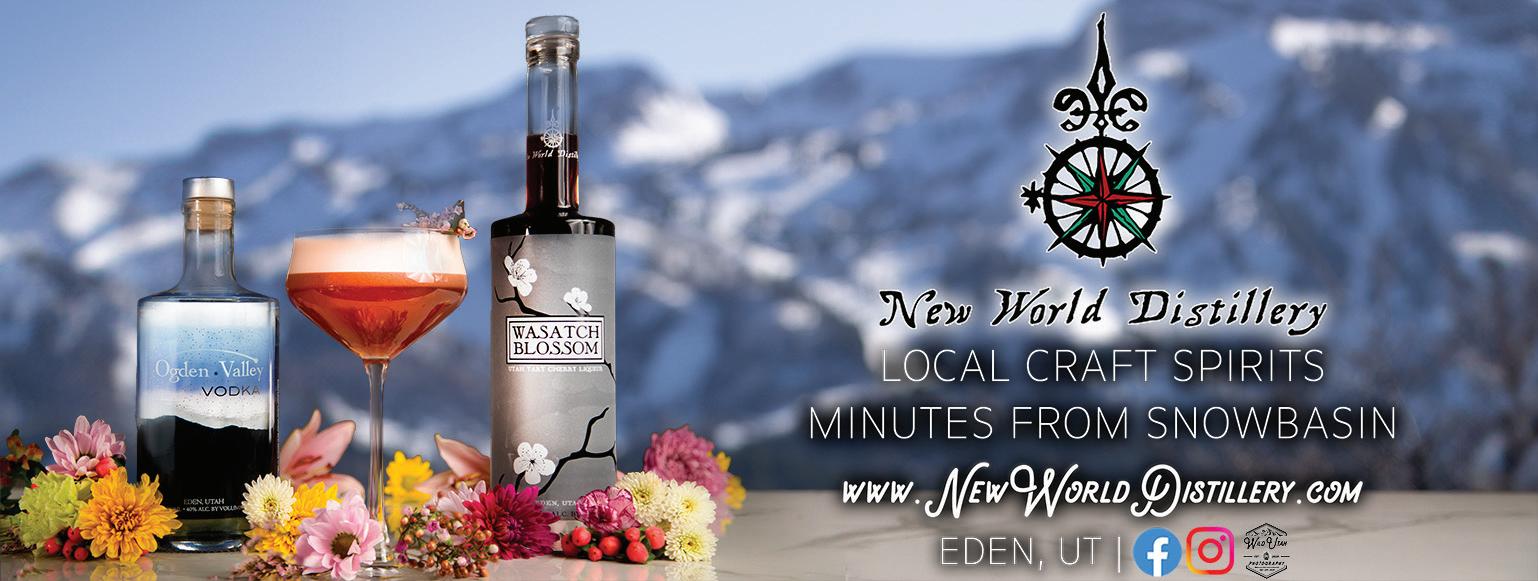
pcsorati
“Can I just ask? Who wants to bring a child into this scenario? End stage capitalism, Christian fascism, conservative corruption. Climate change, weather extremes, inflation, crimes among the men in charge. Hardly seems like a child friendly, let alone, mother friendly, place to be. But … don’t get pregnant, because then, the choice is out of your hands. The #supremecourt is corrupt too.”








Ihate to break it to all young people, but the answer is no. We cannot trust the people who are paid to be our “public servants” because, unfortunately, they don’t have the best track record for keeping their own private interests out of their decisions, especially in an era of such dramatic decline of the local media scrutinizing political leaders.
While most of those who we elect are accessible to the public from time to time (with the exception of Mayor Mendenhall who still has yet to agree to a short interview with UTS), the growing number of unelected, highly-paid, very powerful leaders — apparently answer to no one.
In this year’s Hidden Utah issue, we are examining examples of ways in which farmers are working with nature
to produce apples and hemp, and we are examining developers who want to destroy nature in the interest of “progress”.
Why is a canyon that required eons of dramatic geological activity to create, that features some of the most stunning scenery in all of Utah, now going to be gutted with 23 thirty-foot base towers to suspend gondolas? How is this “moving forward” according to UDOT, despite the fact that 89% of residents who have commented on the plan say they don’t want it?
In this issue, Farmer Scott Smith said it concisely: “You have a lot of respect for the land, and a lot of respect for the environment. You take advantage of what nature has given you,” he explains. Smith gets it.

Sadly, the gondola plan is moving forward because those at UDOT have allegedly “listened” to the public comments at the Wasatch Front Regional Council meetings and they have decided to move forward anyway. I went to these meetings where dozens spoke out against the gondolas and just two men spoke in favor. Just two: Dave Fields, CEO of Snowbird, and Nathan Rafferty of Ski Utah.
Their motives appear to be profit driven. Their aim—to drive tourism? To make Utah more appealing? Your guess is as good as mine, because unelected leaders don’t need to discuss their aims, and they didn’t want to be interviewed. But one (Chris McCandless) did agree to a brief interview, and even though I disagree with him, I praise his courage
to talk openly.
On another note, greater Salt Lake County is on a massive building binge. High rise residential towers continue to sprout upward, and the cries of those who are making attempts to preserve history are falling on deaf ears. Developers and city leaders want to raze old buildings to make way for progress. Historic Murray is disappearing. Why should that matter? Why not go to the movies to see historic films? Because a city should be a tapestry; a city should embrace the old and the new, and kids need to learn about the old. Learning about the old puts the new into perspective.
When kids are inundated with TikTok videos, stimulation, entertainment, and very little down time, how, where and when is their imagination going to be stimulated? Where will free-thinking and discerning opinions based on logic and reasoning take place?
Witnessing a canyon that is an incredible example of the forces of geology, such as Little Cottonwood Canyon, or Desolation Canyon which was carved by the Green River, heightens our consciousness. Experiencing a building that was constructed more than 100 years ago, as was the Murray Carnegie library, and examining its historic architecture, makes one curious about the ways in which our ancestors lived, and it provides meaning, purpose, and most importantly, direction to our own lives. It provides cues as to why we need to turn off our distractionary devices and experience the world the way our grandparents enjoyed it. Then we might stop and ask ourselves, “Are we on the right path?”
Enjoy Utah, enjoy the hidden, and find some freedom away from the noise.


The gondola passed UDOT’s approval process. So what does that mean for you and me?
Apparently, Utahns who are into our canyons, hiking, the backcountry and pristine rivers and lakes, i.e., “the public”, are seriously lacking in brainpower. Those who love unobstructed views of evergreens, granite cliff walls and waterfall escarpments just aren’t getting it. Maybe they need to watch the Gondolaworks.com videos a few more times and they will start to clue in that Little Cottonwood Canyon needs a gondola, damnit!
A short chat with a developer/politician who is spearheading the gondola project, Chris McCandless, and I began to understand the frustration he and his cronies are having with these environmental morons, whose opinions don’t really matter anyway.
“Do you ski with your kids?” McCandless inquired of me.
“I thought I was asking the questions, but yes, I skied at Snowbird with one of my kids, one day last winter.”
“Well, don’t you want it to be possible for you and grandkids one day to go skiing?”
“Sure,” I replied.
“This gondola will make this possible. It will make it possible for you and everyone else to continue to enjoy the canyon without it being a place only for tourists and rich people.”
“So the gondola, with huge towers, steel and concrete will ‘save’ Little Cottonwood Canyon?”
“Yeah, as the population grows, traffic will only get worse, and eventually, average Utahns won’t be able to go skiing.”
“But I hardly go skiing now, not because of traffic, but because the lift
ticket price is $184. It’s just too expensive to justify around $400 bucks with lunch and gas to go skiing for a day. with my kid.”
“The gondola will keep skiing available for average Utahns,” McCandless said.
“But I think far more ‘average Utahns’ are going to the backcountry now than the resorts, because the resorts are too expensive, and what the gondola will do is destroy the backcountry, where more Utahns want to do their skiing now.”
“Ha, Ha! That’s not true. Very few people ski in the backcountry compared to those who ski at the resorts. And it won’t destroy the backcountry.”
“Those 23 towers with 30-foot diameter bases all plopped into the backcountry through the canyon won’t destroy the backcountry experience?”
“No, most of [the towers] will be just off the main road.”
“The gondola could cost $1 billion when all is said and done. How is that going to help average Utahns who just want to be able to take their kids somewhere on the weekends, who don’t have $450 to spend?”
McCandless said he was about to go into a very important meeting and he couldn’t really talk any longer, but he assured me that the gondola, whether it is built while he is still alive, or after he is gone, will make the canyons more accessible for everyone.
I suppose we should all just trust him? I guess the developers who operate our organizations, such as Visit Salt Lake City (as he does), and who own land around the gondola (as he does), and who pull the strings with their cronies in UDOT, and elsewhere, know better than all of us. Can we assume that the
Front Regional Council has received concerning the gondola are lacking in real awareness, understanding and brainpower?
According to John Gleason, Public Relations Director at UDOT, “One of the top reasons a gondola has been proposed is the threat of avalanche danger.”
From our perspective, what is happening is extreme corruption and collusion among our developer/politician/elites. Despite the fact that most people in the place where the gondola will reside do not want it there, we have several major corporate entities, along with developers, who have abundant power, to sway the decision makers at UDOT. The Austrian-based Doppelmayr Gruppe moved its corporate headquarters to Utah in anticipation of securing this gondola project. Does that mean the gondola is a slam-dunk?
Carl Fisher, Executive Director of Save Our Canyons, and Dan McCool, Emeritus Professor at the University of Utah, both believe that the gondola isn’t a traffic reduction strategy. McCool believes that it may be a lift ticket sales strategy instead. Fisher also stated that “UDOT most likely won’t close the canyon road, and by adding a gondola, instead of a traffic reduction, the canyon would likely see a 30% increase in visitors, inducing additional traffic into the canyon.”
The EIS (Environmental Impact Statement) is what most Utah developers/politicians hang their hat on to
defend their decision to move forward with the gondola. This was a very expensive way in which they could proclaim that Little Cottonwood has too many avalanches, too much traffic, and that a gondola is the only viable solution. But our major question is: a solution to what?
When all you possess in your toolbox is a hammer, everything looks like a nail. When the only tools developers hold in their toolboxes are trains, wider roads or gondolas, they only see their own tools as the only solutions.
There are far more viable tools, including reserving parking spaces; carpooling apps and better bus hubs.
Utah’s greedy developers/politicians could examine National Parks who don’t consider environmental destroying “tools” as viable options. We made the point that Arches National Park would never consider a gondola to Delicate Arch, despite the huge amount of visitor traffic that wants to see it. This is because they understand a gondola would destroy the area and the experience.
Putting the longest gondola in the world up Little Cottonwood Canyon would destroy the experience for everyone who doesn’t want to pay the fees for lift tickets, parking, and a gondola ride. It’s time our “leaders” begin to listen to the people they supposedly serve. It’s time the elites stop concluding that we are idiots and that they know better than us.
Let’s not find out the hard way. Let’s stop this gondola fiasco by eliminating it as a possibility before it’s too late.
ARCHES NATIONAL PARK WOULD NEVER CONSIDER A GONDOLA TO DELICATE ARCH.



Drive down the stretch of State Street between 4800 South and Vine Street and you’ll wonder if you’ve gone back in time. Historic buildings listed on the National Register of Historic Places like the Desert Star Theatre and the Murray Theatre line the street. Take a detour through the neighboring Murray Downtown Residential Historic District where you’ll see rows of charming old houses and … a seven story high-rise of brand new condos.
The condos are going up on the site of the historic Murray 1st Chapel, built in 1907, and Carnegie Library built in 1915. The buildings were demolished in 2020. There’s a noticeable difference in the neighborhood. Murray City lost a landmark, and its residents lost their sense of place.
These buildings were saved from demolition once. The founder of Historic Murray First Foundation, Kathleen Stanford, filed a lawsuit against Murray City in 2017, according to an article on KSL.com. Stanford alleged the plan to demolish the historic buildings violated two city codes. The
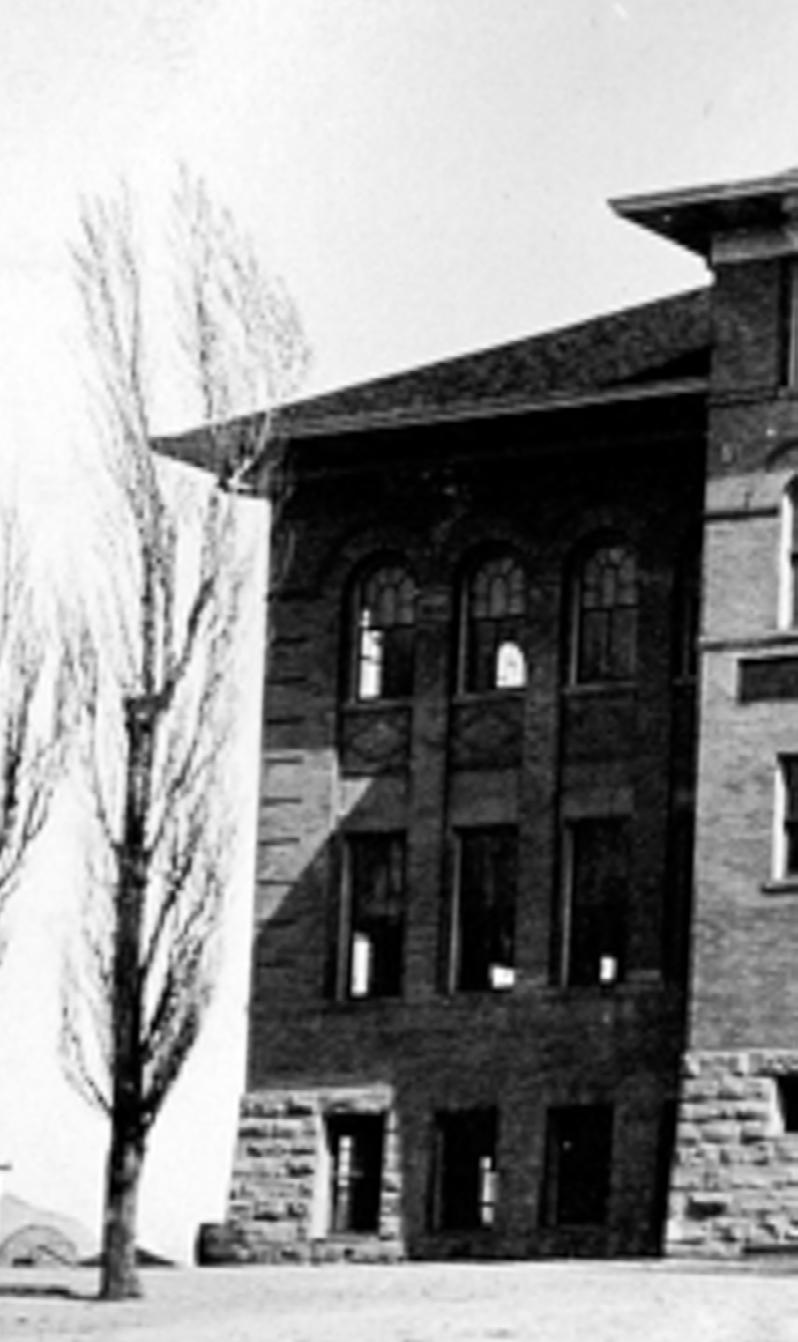
article states that Judge Keith Kelly said the city’s planning commission did not review or apply the codes related to historic buildings in their decision. Soon after losing the lawsuit, Murray City dismantled their ordinances to protect historic buildings.
“People are getting sick of losing things that make Murray feel like home,” says Rachel Morot, Vice President and founding member of Historic Murray First Foundation.
Historic Murray First Foundation is fighting to save Murray’s historic buildings. Meeting every two weeks at board members’ houses, the small nonprofit made up of seven friends, neighbors, and history-loving Murrayites, plans walking tours of historic homes, educa-
tional lectures, and campaigns to save their city’s historic buildings.
According to their website, their mission is: “… advocacy, education, and fundraising to preserve and repurpose the unique architecture of the historic downtown section of Murray City which is at immediate risk of demolition and redevelopment.”
Community advocacy is a lot of work, but this little group is making a difference. Historic Murray First Foundation was able to make preservation a key platform in the city’s last election. They’ve also kept preservation at the forefront of the city’s consciousness, says Morot. “If it weren’t for our efforts, the city would be able to ignore historic preservation entirely.”
The foundation has a vision for Murray City that includes preserving, restoring and repurposing historic buildings. On their website, they spell out what historic preservation means. Besides creating affordable housing and walkable neighborhoods, historic preservation means higher property values and saving money on new construction. Economic development doesn’t have to mean tearing down Murray’s history. Their website states, “A healthy and vibrant community needs a good balance of both the old and the new to continue thriving and serving its people.”
Their last campaign was an attempt to save the Arlington School at 5052 South State Street. This building had many incarnations, the latest of which

was the home of Murray’s City Hall. On their website, Historic Murray First Foundation detailed the reasons why this historic building deserved to be saved. The Arlington was designed with a nod to the Art Deco style by Scott & Welch, which also designed the SLC Masonic Temple. This building was also a Works Progress Administration project to help the community after the Great Depression. The Arlington also has a unique park-like setting with a wide green open space, which is rare along State Street.
Murray City wants to sell the building to a developer who will likely tear it down for another high-rise apartment building. Despite their grassroots efforts to save and repurpose the building, it looks like the city will get its way, again. “There is a lot of ambivalence in Murray because so often things go the way of the developers and the city, rather
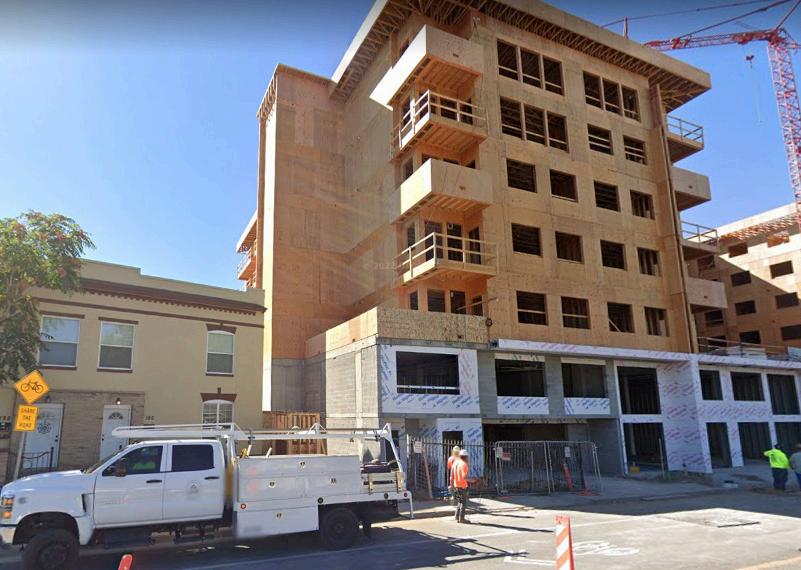
than the voting taxpayers,” admits Morot, but she doesn’t sound defeated. She wants the real stakeholders to speak up. “When you talk about stakeholders, it’s the people who live in this community who have to be overshadowed by these giant highrises.”
With limited volunteers and funds, Historic Murray First Foundation is doing their best to preserve Murray’s historic buildings in a city determined to bring in more revenue by tearing them down. Without codes to protect the buildings, it’s going to be a challenge.
If you’d like to help Historic Murray First Foundation, they are actively seeking volunteers, a volunteer coordinator, board members, and help with grant writing. They’re also seeking donations. Visit their website and follow them on Facebook and Instagram for updates and more information.
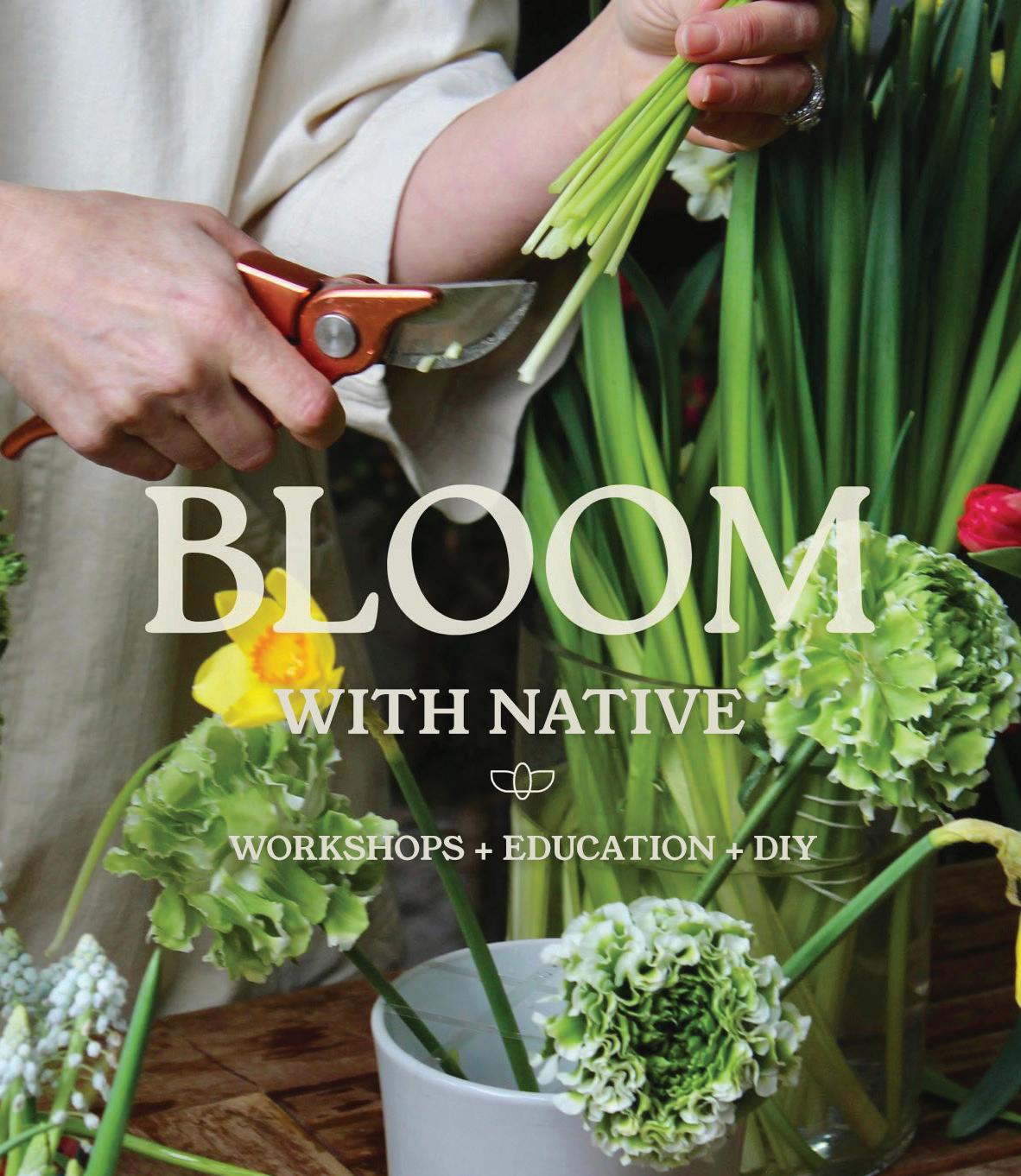



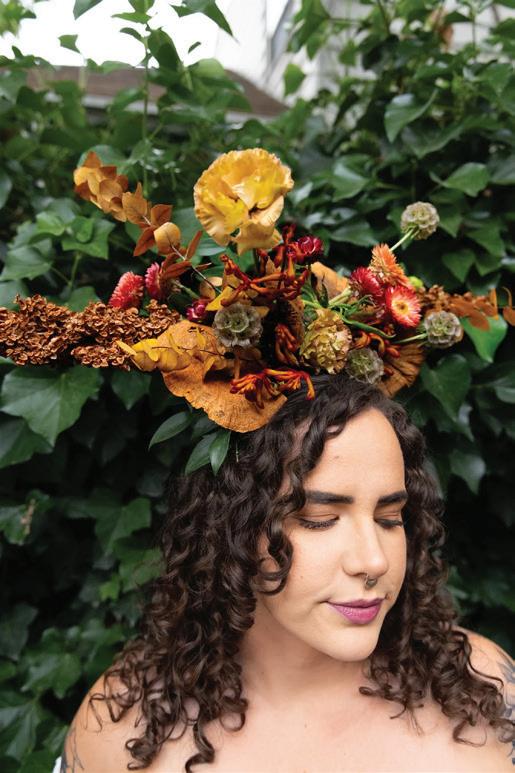

Utah animal shelters are experiencing a rise in surrendered animals, including many puppies.

When I saw this post from Salt Lake County Animal Services on Instagram, I knew I had to do something to help homeless pets.
Per Best Friends Animal Society — Animal Shelter Statistics:
The number of dogs and cats killed in our state - simply for lack of homes has nearly
DOUBLED from 2021 to 2022. In 2020, 829 dogs and cats were killed because they didn’t have homes. In 2021, it was 886. Last year it jumped to 1,700.
I reached out to Guinnevere Shuster, Director of Marketing & Communications at the Humane Society of Utah to learn more. She explained that during
COVID-19, shelter and vet clinics were forced to cut back on critical services like spaying and neutering. People also started to breed their dogs to bring in extra income. “We’re seeing a lot of ‘oops’ litters,” says Shuster. “You also have people who intentionally started breeding pets during that time … we’re still seeing the effects of that as well …”
Dog breeders are still bringing more puppies into the world, only fewer people are buying them. “For the first time in the ten years I’ve been in animal welfare, we’re having people surrender their leftover litters, from three to five puppies,” says Shuster. “We had someone bring us four lab puppies because they had a litter of eleven and they weren’t able to sell all the puppies. And unfortunately, that’s happened a few
times this year. It’s not one particular breeder, it’s multiple breeders.”
“We’re getting great dogs in, I mean, like, well-mannered, happy, healthy dogs, and the owners aren’t coming in for them for whatever reason,” says Jami Johanson, a Special Programs Manager at Salt Lake County Animal Services for 11 years. “I see every day how many great dogs and cats we have at the shelter. I just wish everyone else could see that.”
“People should really take note of what’s going on at animal shelters; it really is a community issue,” explains Shuster. “We’re coming to a boiling point. We only have so many staff, we only have so much room, we can do the best that we can do, but ultimately, we need help from the community if we want to save the lives of all these animals.”
Johanson echoed this point: “Everyone wants to support an animal shelter with a no-kill status, so by adopting or fostering, you’re helping shelters like Salt Lake County Animal Services continue to be a no-kill animal shelter.”
Even if you’re not in a position to adopt an animal, there’s plenty you can do to help Utah’s homeless cats and dogs:

“Educating others about responsible pet ownership is essential when it comes to reducing the amount of animals in shelters,” says Shuster. Sharing information, either online or in person, about low-cost or free services like microchips, pet food pantries, spaying and neutering, or vaccinations is a simple way to help advocate for Utah’s pets.

“In the first half of 2023, more dogs are entering animal shelters as strays compared to the previous year. Being able to reunite pets quickly with their owners provides much-needed shelter space,” says Shuster. Salt Lake County Animal Services only take in stray or abandoned pets, so proper identification is crucial in reuniting pets with their people. Johanson stressed the importance of updating the contact information on tags and
after moving.
If you have room in your home and heart for a dog or cat, but can’t make a lifetime commitment, fostering is for you! Besides opening up space in the shelter, animals in foster care “learn how to bond with people, receive
necessary personal care, and avoid exposure to common shelter illnesses, all while away from the stress of a shelter environment,” according to the Humane Society of Utah’s website.
Volunteering a few hours a month will make a huge difference for cats and dogs in shelters. You could give a dog a break from shelter life by taking it hiking or to the park with Salt Lake County Animal Services “Hounds about Town” program. You could also bottle feed newborn kittens. There are plenty of different volunteer opportunities, so find the right one for you!
If you’re short on time, animal shelters desperately need donations of items and money. “Animal shelters rely on the support of volunteers and donations to provide care for animals. Additionally, donating supplies like puppy or kitten food, blankets, or monetary contributions can make a real significant difference in the shelters’ operations,” says Shuster.




 By Richard Markosian
By Richard Markosian
The water and waves on a wild river put a man’s heart at peace. But could it also put a child’s heart at peace?
After my wife bailed out on the idea of floating down the Green River for five days with Sheri Griffith River Expeditions, I invited my brother and his twelve-year-old son Benji to join me and my eight-year-old, Tommy.

Would this be fun? Or would it be like putting a piranha in a goldfish pond? My kid has “behavior problems”. He doesn’t like to mind adults. My wife wants to offer “old-school techniques” to manage these problems. She is wellacquainted with these, having been raised in Bosnia — which happens to be something like the capital of old-school traditions in raising children. If you aren’t acquainted with what “old-school” methods are, just ask your grandparents, or even your parents.
We don’t use “old-school” on Tommy; we use new-school techniques and highly-developed psychological training from the great schools of Carl Rogers, Abraham Maslow and Jean Paget. In fact, we have reached the apogee of child behavioral psychology to handle Tommy’s behavioral issues and we
have seen some results!
We can say that Tommy used to almost never mind; now he minds when he feels like it, or if the consequence suits him. But back to the river ...
Would I enjoy this trip with Tommy? Could he behave with all of these new people? Probably better stated: Please God, will you help Tommy to obey? We were all about to find out.
The boats were launched after a short plane ride in a six-seater Cessna down the gorge and canyon of the river we were about to travel. The meandering serpent of a river and its canyon has an appropriate name.
Below us were thousands of acres of desolation: empty wilderness, mostly craggy cliffs, pouring boulders into a sea of sagebrush and bristlecone pine. But closer to the water there was an entirely different ecology: overhanging cottonwoods, tamarisk and small canyons with boggy threshes and cattails — and so much wildlife!
The trilling birds in the boggy areas produced a variety of songs, yet they maintained a chorus rather than a cacophony. With wild calls of life unfettered from man’s dominion, this
place was a domain that will far outlast our silly efforts to control, manipulate and monetize it.
Upon launching, Tommy behaves. He’s wearing his life vest or PPE. He’s smiling. He’s charming everyone. As are my brother and his son, as are all the passengers. It’s very difficult to watch curious wild horses on the shore lapping water as we float by without smiling or being intrigued by such majestic wild creatures. But like the antelope herd we witnessed running in sync, they somehow know we are a threat, and they gallop off in a hurry.
We motor along on this day because the water is flat, and the kids play with massive water rockets. Time stands still, but moves quickly at the same time. This description doesn’t make sense unless you have been on a river trip, enraptured by the moment and the scenic expanse. One feels truly alive as thoughts and worries slowly
vanish into a lazy eddy, pulled into the deep and dark insignificance below the water.
About the water: they call it the Green River, and sometimes it is, but most of the time it’s a reddishbrown. It carries a lot of silt down to its confluence with the Colorado, and the river is running high and fast this year — around 40 CFS (cubic feet per second). It was running at 63 CFS a month ago, but it hasn’t run higher than 36 CFS in the past decade. Of course, this is great news for our current “Mega Drought” conditions.

The thirsty land has received a nice drink. And the nearly empty reservoirs — Powell and Meade — will be able to power and hydrate our Great Basin kingdom electrical grid once again.
But to ride on this massive artery — to be even a tiny spec floating through one of the greatest most important river systems in the world — powering





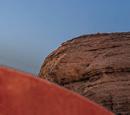
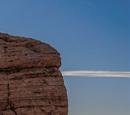
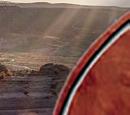




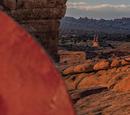
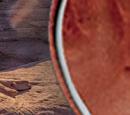




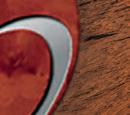
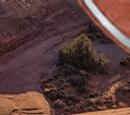
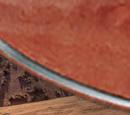


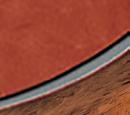




















and hydrating Las Vegas, Phoenix, Tucson and Los Angeles through an endless array of aqueducts, canals and siphons — here the river is nature, there the river is pure gold.

Everyone feels fortunate and happy to be here, especially Tommy, who has made a nice bond with Devan, a 12-year-old boy from New Jersey who has come with his grandparents Bob and Ann and twin sister Maya.
They invent a game called “rock basketball”. Probably not difficult to guess how the game is played. It’s just basketball with a hoop fashioned out of stones and sticks and the basketball is another medium-sized rock. The competition is fierce. We all watch the
game play out.
The river guides are fantastic, providing gourmet meals on the fly. Working as a team, they craft seasoned chicken with grape wraps. Brenda has been guiding these flotillas for 15 years, Owen for 10 and Tianna for one year. Their methods and processes to make the “groover” (bathroom) situation simple and easy makes it all very nice for the passengers.
My favorite part every night was watching the sun set over the river and witnessing the rising of the Milky Way. With a moonless night the first two evenings, it was like observing the wild horses, big horned sheep and













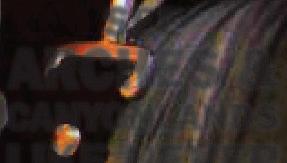



SCAN TO SEE ALL AVAILABLE AMENITIES & ACTIVITIES

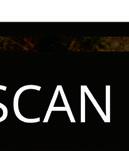


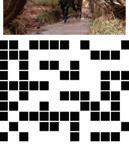


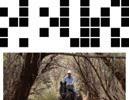





countless birds – like visiting a friend we haven’t seen for a long while: “Ah, so that’s what you look like!”
We have disconnected ourselves from this real world and we are now building something far less real and genuine. Why are we giving this world up? We are sacrificing the god of nature to the god of progress. For what? For “a better future?” The jury is still out on that one.
Tommy talks a lot. He’s a little too inquisitive, but Brenda is very patient with him. He behaves nearly the entire time. The water, the sunshine and the rapids — they get into your system. This is a means to reconnection; this is the method
of feeling life; this is the life much larger than ours that can only produce a sense of joy in being. Tommy’s “behavior problems” were like my worries below the surface. Like the manner in which water flowing over rock over time cuts the rock’s shape and definition; time around water reveals the peace of a boy determined to be wild by society’s standards.
We head back to civilization and my worries reappear. We return home and we long for what we are missing.
Special thanks to Sheri Griffith River Expeditions for accommodating us on such a fantastic adventure.








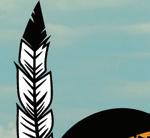

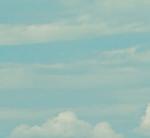
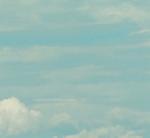
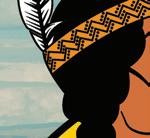
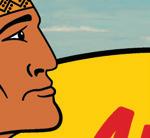

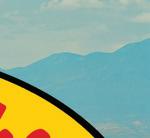
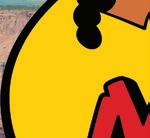

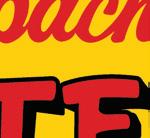
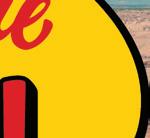



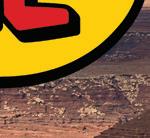


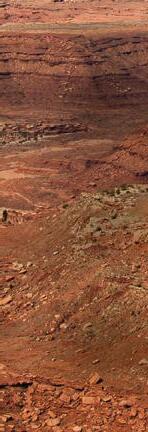


Thirty-two-year-old Kye Hallows has worked in music stores for half his life. He’s no longer surprised when he meets people who have never seen a vinyl record.

Kye co-owns Lavender Vinyl, a record shop on Ogden’s historic 25th street where over 10,000 vinyl records (neatly arranged by genre) are for sale. On the store’s turntable, known as the listening station, customers can preview used records. “I show somebody how to work it at least once a week,” Kye said. Other passersby come in out of nostalgia. As people browse the records, they often share memories of concerts long ago and family members since passed. “I hear all kinds of stories,” Kye said. “You just see that spark on
their face.”
Upending any notion that vinyl records and storefronts belong to the past, Lavender Vinyl is celebrating seven years in business this July, with plans to expand already underway. But to Kye and many loyal customers, the store’s success is about more than records. It’s about fostering community and supporting people who identify as LGBTQ+.
How does a store that sells records survive?
Nationwide sales of vinyl records reached a new milestone last year, according to the Record Industry Association of America. Revenue from vinyl records grew 17% to $1.2 billion in 2022, the sixteenth consecutive year of growth. That same year, vinyl records ac-



counted for 71% of all revenue from physical music formats and surpassed sales of CDs in units for the first time since 1987.
Kye worked for six years at Utah’s largest record store, Graywhale Entertainment, in Salt Lake City, where he met friend and co-owner Blake Lundell. Although Blake loves heavy metal music and is more reserved, and Kye loves hip hop and is more outgoing, they strike a balance that Kye said makes them great business partners.
They also share the belief that a record store is a community cornerstone. “You can go in and talk to an actual human and have a connection and bond over a shared love of something,” Kye said. “It’s a whole experience.”
Although Lavender Vinyl receives new inventory every Friday, more than half of the store’s revenue comes from sales of used records. Their used collection spans all genres and is northern Utah’s largest, according to Kye. Once, a rare Frank Ocean album sold for $400, which the store split with the original owner. That kind of sale doesn’t happen very often. New vinyl records, which Kye said have a much smaller profit margin, typically sell for about $30.
Every week, Lavender Vinyl posts an Instagram reel that flips through newly arrived titles, which customers can pay an extra $6 to have mailed. Mail orders make up about 10% of their business. Over the years, Kye said they’ve shipped vinyl records to every US state.
While they do get foot traffic, their regular customers sustain the business. One of them is Ogden resident Linsey Kunzler, who started collecting records a decade ago. She’s purchased more than 50 records (mostly used) from Lavender Vinyl and gotten to know Kye, who she now considers a best friend.
Kye’s commitment to supporting people who are LGBTQ+ is “more important than the records,” Linsey said. It’s not just the rain-
bow pride flag in the store’s window, or the queer-owned coffee they stock and sell, or the queer magazine Kye and his wife started (the fourth edition of which came out in June), or the events Kye hosts to bring together the queer community.
It’s Kye himself, who openly shares his journey as a transgender man. The process of receiving gender-affirming care “was an absolute nightmare,” Kye shared in a 2021 episode of the podcast “Toasted Lavender”, which he co-hosted with Linsey and their spouses.
“I feel like my business gave me the confidence to be who I really am,” Kye told me. He’s aware of many trans people who don’t have that luxury, because coming out might result in losing their job, housing or even family members.
“I have all those things secured for myself,” Kye said. “I want to share my security with anybody who needs it.” Kye also wants to show that he’s “just a regular-ass guy running a business.”
While running that business is a dream come true for both Kye and co-owner Blake, it takes a lot of work. They are the store’s only two employees. “You’re responsible for everything,” Kye said. “It can cause a lot of stress.”
This year, Lavender Vinyl opened two satellite stores: one in Bountiful inside Split Leaf Coffee, and the other in Logan inside Grounds for Coffee. “It’s not huge or anything, but it’s already positive,” Kye said. Eventually, they hope to have a second permanent location of their own.
As far as the day-to-day, Kye loves sharing music with people. He sees music as a “universal language,” and a powerful force for good, especially amidst the ongoing, divisive debate over transgender rights. “I feel like music is something that can really unite us,” he says. “And I see that every day in the connections that I have with people who come into our store.”
i feel like my business gave me the confidence to be who I really am

 By Heather L. King
By Heather L. King
Don’t you love having a secret dining hideaway that only your closest friends know about? Here, we’re pulling back the curtain and revealing five of our favorite hidden spots along the Wasatch Front that are worth finding and enjoying.
Billed as “Asian StEat Food Fare” this little Indonesian and Southeast Asian restaurant in Sandy packs a flavor punch you won’t forget once you try it. Start with something familiar like the lollipop wings on the appetizer menu. These crunchy-skin wings are well-coated in a sweet and tangy sauce. If you’re new to street food, try the
Family Makan combo with a choice of three dishes like fried rice or stir fry noodles plus sides and rice.
Serving Utahns since 2017, this colorful restaurant is a bright spot for south valley diners and on your way out you can grab some anchovy chili sambal or spekkoek (an Indian layer cake) from the grocery racks on the east wall.
“Ricotta is the soul of cannoli,” says co-owner of Sapori, Azzurra Cuchel along with her husband Luca La Mantia. The couple hail from Sicily and always dreamed of opening a bakery. Their dream came true in 2019 with the opening of Sapori Italian Bakery & Café









on Ogden’s 24th Street.
The bakery cases filled with Italian pastries and chilled gelato transport customers right to a café in Italy where one can sip Italian Lavazza coffee next to a Vespa and savor the cannolis filled with sweet creamy ricotta.
You’ll find pasta, lasagna and parmigiana selections for lunch too, but don’t leave without a gorgeous zeppole pastry or scoop of cappuccino gelato.
Head west of downtown Salt Lake to get southern flavors inspired by the Cajun and Creole cuisine of New Orleans at Neutral Ground Lounge.
Don’t miss the fried green tomatoes coated in cornmeal and served with a
slightly sweet red pepper jelly and spicy mayo. Want to try alligator and crawfish? This is the place with alligator nachos served with pickled jalapenos and Cajun sour cream and crawfish cakes and cornmeal-crusted pickled crawfish.
The 21-and-over lounge side pays homage to NOLA with a dark interior with pops of bright colors in the furnishings and art and equally interesting cocktails to match like a New Orlean’s original Sazerac variation featuring a hint of lavender.
Located in a strip mall in Sandy, Localz is one of the kindest family-run establishments you’ll find these days. Servers are attentive and knowledgeable,















making recommendations that reflect diverse tastes.
Tuna lovers will delight in the tuna crudo salad. The arugula salad is brimming with charred broccoli and carrot slaw dressed in a kicky lemon basil vinaigrette and topped with perfectly seared ahi tuna slices fanned across the bowl.
For stick-to-your ribs hearty entrees, order the jambalaya filled with shrimp, chicken and sausage, or the low country shrimp and cheesy grits studded with mushrooms, peppers and bacon.
Servings are plentiful at this Persian restaurant in Cottonwood Heights, and if you can take a table of adventurous diners, you’ll try so many colorful dishes.

The four-starter appetizer is ideal for sharing. Eggplant lovers will delight in two eggplant dishes — one featuring sauteed eggplant and mint with fermented cheese and the other tomatoes, garlic and egg. Two kinds of Persian yogurt compliment the aubergine.
The Zaferan Family entrée platter comes with barg, chicken kabob and two skewers of ground beef plus rice. Rest assured, your eyes are bigger than your stomach.
If you love lamb, don’t miss the shank (special entree menu item 13) which literally falls off the bone with a fork and melts in your mouth.
Most dishes at Zaferan Café are served on beautiful metal platters that really do make the food a feast for the eyes.









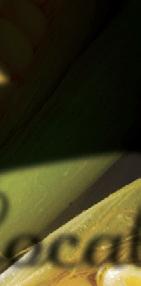

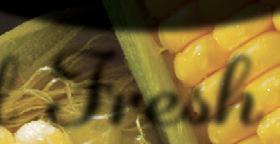





Scott Smith says he’s been farming
“about as long as I could walk.” On property owned by his family since the mid-1800s, Smith uses environmentally-friendly methods to grow tree-ripe fruit. You can find his peaches, sweet cherries, apricots, and other delectable fruits at the Downtown Farmers Market in Salt Lake City, Park City Farmers Market, and the Farm Yard Fresh Online Market with pickups from Farmington to Santaquin.
Smith, the youngest of five kids, displayed a solid work ethic early on. He tagged along with his father doing farm chores, a little red wagon filled to the brim with apricots trailing behind.
“My dad said, ‘Man, that kid’s ambitious,’” remarked Smith. “I didn’t know what the word meant, but it sounded important.”
Growing up on a working farm had its ad vantages, especially for kids with energy to burn. “I was a rambunctious kid. I was going, going, going. If I hadn’t had a farm where you had to work a certain amount of time each day, it would have been real easy to get into some mischief!” Smith mused. Besides keeping him out of trouble, growing up on a farm taught Smith how to work. “... you had to have a work ethic. You couldn’t watch cartoons all day.”
Now with a family of his own, Smith farms the same land with the same reverence for nature passed down by his father. “He was the greatest envi-
ronmentalist that I’ve ever known,” he says. Utilizing natural predators to curb damage to his fruit, Smith takes great pride in his farming and stewardship of his land.

“You have a lot of respect for the land, and a lot of respect for the environment. You take advantage of what nature has given you,” he explains.
“Mating disruption is better than the standard way of farming. It’s better than organic because you just flat don’t spray. It’s a lure that has a pheromone and you use those lures for codling moths, the main predator in apples and pears. It makes the male and female — if they get together, they’re not fertile,” he summarizes. Integrated Pest Management, or IPM, is a way of using nature to protect crops. Natural predators keep pests away from the crops, and pollinators help the crops grow. Smith explained that eliminating the lacewings or the ladybugs would be detrimental because they eat the aphids and mites that destroy his crops.
“As far as I know, nobody has the population of native bees that we have. Native bees are better pollinators because they’re sporadic; they go from the pollinator tree back to the original tree.”
Smith works with Mother Nature, not against her. “There’s a lot going on with nature. You don’t want to take her out of the equation,” he reasons. He
respects the wildlife on his farm. His family builds nesting boxes for hawks. Eagles fly through his sky, and a family of shy bobcats made his orchard their home. “I don’t know if you want to put this in the article, but I feed coyotes,” he confided. “I’ve never seen a coyote eat anything but fruit on the ground.”
While being a good steward of his land is important to Smith, he also has a keen sense of business. He says that farming, like all businesses, relies on happy, satisfied customers.
When asked what it means to him to be a farmer, he explained his business philosophy. “It’s kinda like a lot of businesses. If you do it right, you’ll eventually figure out your microclimate. When you’re doing sales, you have to find the market for what you’re doing. For doing a farm, it’s the same thing,” Smith explains. Rather than picking
fruit a day or two earlier, ensuring it can travel across state lines, Smith picks his crop when it’s ripe, ensuring his customers the tastiest fruit.

“You have a trust, or you have a clientele you develop and they want to count on it every time,” explains Smith. “Once you’ve gained their trust, you have to steward, not only with the trees, but you have a stewardship with the customer.”
By providing tree-ripened fruit to his customers while preserving the land for future generations, Smith’s relationship to nature is commendable. If you’ve ever tasted fruit from Smith Orchard, you know Mother Nature is doing her part on the bargain. “Anytime you come in and change the ecosystem by cultivating something, you’re going to have a lesser or greater impact. I think everything we’ve done has been an upgrade,” Smith states proudly.










You probably know that Provo’s reputation revolves around Brigham Young University. After spending three years as a student at BYU, I know almost everything there is to know about what’s going on around campus. But beyond the obvious events that the university has to offer, Provo has several hidden gems worth discovering.
A thriving live music scene in Provo keeps performers and concert goers coming back year after year. Velour, a live music gallery on University Avenue, is one of the hot spots for up-and-coming musicians. It hosts a biannual Battle of the Bands that brings stiff competition each year because the winners of previous years have included hits like Imagine Dragons and Neon Trees.
Weeknights at the gallery range from new artist nights to headliner bands to open mics. Velour also helps host the

music festival Fork Fest with the aid of local sponsors, including record store 3hive record lounge, showing how players in the local music scene support each other.
Another live music spot on Center Street, ABG’s Bar, hosts live bands each week. Cedric Quincey, lead singer in the band Lovingly Clad, performed for a packed house at ABG’s. When I asked him what he thought of the local music scene in Provo, he said that even though it was a small scene, the community has been extremely supportive of their band.
“I feel like there is so much room to actually get recognition for the music we make,” he said. Friends and family of the band members filed to the back of the bar by the stage until the place was standing room only. Even though ABG’s may be less well known than Velour, the food was great and the atmosphere surged with electric guitars and clapping along to the music.
One thing Provo is known for is its charming Center Street. But beyond the surface of the historic buildings and the string lights hanging outside quaint coffee shops, is a rich opportunity to experience a new culture through food. Center Street in Provo boasts tastes from almost every continent, and with Provo ranking number one for best city to start a business, it’s no wonder that there is such a variety of options when it comes to international food spots.
From one side of the map to the other, individuals have started unique restaurants to share the tastes of their homelands. Pogo’s is a pizza and chicken restaurant that provides a peek into flavors from Zimbabwe, while just down the street, Hruska’s Kolaches creates a unique taste of Czech Republic cuisine by introducing us to rolls of bread with both savory and sweet fillings. Every spot up and
down Center Street is filled with other experiences from Vietnamese Pho houses to French pastry shops. Japanese, Salvadoran, Mexican, and of course several popular American cheeseburger spots draw loyal customers as well. The wide mix of different foods means there will be something to interest every palate, and the quantity of restaurants could keep you trying something new for your weekly date night for months. You might even find a spot that makes you say, “This is the place.”
Mere miles from downtown Provo, Utah Lake might be one of the most underutilized recreational options. Despite battling a poor reputation in recent years over algae blooms and an effort to develop the lake, ongoing efforts to preserve the lake and increase accessibility make the lake an underrated outlet for Provo residents.
Utah Lake website shows a map of access points shows where lake goers can park and enjoy the various recreational activities, including boating and kayaking. This is the perfect opportunity to get outside with family or friends and create memories that can be remembered fondly for years to come, or even to make it a yearly tradition.
Looking beyond Provo’s stereotype as just a college town shows that at its core, it’s a city full of potential for new experiences, not just at college, but in the culture of music, food, and the beautiful outdoors. Whether you’re searching for the next big rock band to come out of Velour, curating your food critic Instagram account, or you’re in need of a new outdoor escape, there’s something in Provo for everyone.

SUGAR HOUSE — In recent decades, this chic Salt Lake City community has erupted in high-density residential and commercial growth, setting the stage for challenging traffic congestion and parking conundrums.
And people driving along 2100 South — the main east-west thoroughfare in Sugar House — often face traffic delays and parking dilemmas that can cause the area’s charm to wear a bit thin.

But city officials and staff have worked to get ahead of the problem. In November 2018, voters approved an $87 million “Funding Our Future’’ bond to pay for much-needed improvements to major streets, 21st South among them.
“In Sugar House, 2100 South is used for everything,” said Salt Lake City Transportation Director Jon Larsen. “And that can be really challenging.”
The community’s rough boundaries extend from 500 East to 2100 East, between 1300 South and 2700 South — roughly 5.7 square miles according to city-facts.com. And niche.com says that more than 42,000 people call it home.
The community’s widespread appeal draws more than its share of vehicle traffic, compounding its challenges.
“Cars are so inefficient space wise. If you widen the streets to accommodate all the cars, then you don’t have any space left for anything else,” Larsen said.
In addition to accessing nearby shops and restaurants, 21st South also provides entry to connecting residential streets. And widening the alternately two- to four-lane road is not an option, since many storefronts directly border sidewalks and streets.
“As Sugar House continues to grow










vertically and intensify, the only way you can accommodate more people is to get them out of their cars,” Larsen said. “Luckily, we have the S line and the accompanying trail.”
The two-mile S Line — a trolley that connects South Salt Lake to Sugar House and the TRAX light rail system — runs alongside a bike and walking path that connects to Parley’s Trail network.
In May, extensive plans to reconstruct 2100 South from 700 East to 1300 East in 2024-2025 were made public, revealing the pressures that come along with intense growth.
For example:
• More than 600,000 pedestrians flock to Monument Plaza (1078 E. 2100 South) per year
• Approximately 30,000 vehicles use 2100 South every day
• About 80 percent of those vehicles stop for some reason
• Left turns contribute to 37 percent of crashes on 2100 South
• Speeds during rush hour range from 18 to 22 mph in the morning and 10 to 13 mph in the evening
• UTA’s Bus Route 21 carries about 1,500 riders per day
Planned improvements include installing dedicated left-turn lanes and crash-reducing medians at key intersections along 2100 South to reduce the number of unexpected traffic stops.
More trees and public space will also be added, along with biking and pedestrian-friendly travel areas along 2100 South.
As far as parking, Larsen said that location matters and “how you crack that nut is kind of complicated.”
“There’s enough parking — but not necessarily enough created for each individual business,” Larsen said. “And there’s just not enough on-street park-
ing to ever meet that full demand.”
Erika Wiggins, who co-chairs the Sugar House Chamber of Commerce, provided a map charting five paid and six public parking lots that serve the area, along with 109 customer spaces dedicated to specific businesses. By email, Wiggins said she was unaware of any new parking developments in the works.
Business owners on 2100 South said their customers frequently deal with parking and traffic challenges.
This February, Rae Clapper opened Sugar House Craft & Create in the old Rockwood Furniture building at 1066 E. 2100 South. Many of her customers come to her art space to engage in scrapbooking for several hours at a time.
With very few stalls out front, Clapper said that most of them — with bags or rolling totes filled with craft materials in tow — park a couple blocks away or end up paying $10 at a nearby underground lot.
“I give customers my cell phone number and say ‘text me when you get here and I will happily help you bring all your stuff in,’” Clapper said, expressing eagerness to find better solutions.
Last August, Mark Morris opened Work Hive in the Historic Hyrum Jensen Mansion at 775 E. 2100 South — a site near the community’s west edge.
“When you get into the middle of Sugar House, traffic slows down,” Morris said. “But what we deal with here are people who are driving speeds that are certainly not appropriate for the neighborhoods.”
Morris noted that many Work Hive members who live within a couple of miles will bike to his Sugar House location.
“They say biking is great in Sugar House — except on 2100 South,” Morris said. “The city is planning to add a pretty significant shared-use path along the south side of 21st South, which will give cyclists a safe place to bike.”




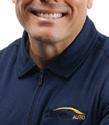












 By Laurel Dudley
By Laurel Dudley
The house was still standing but fire had ravaged the inside. Soot covered the floor. A family photo clung to the wall; its frame had melted. When 13-year-old Richard Ferguson stepped inside, he cupped his hand over his nose and mouth, but the smell of smoke punched through.
Alongside his sister, mom and stepdad, Ferguson sifted through rubble. Most of his favorite sci-fi books were destroyed. But tucked inside the seat of a stool, he found a more serious one. It was a gift from his dad, whom he adored. He brushed it off. In the years to come, he’d return to that book again and again, even though the pages still smelled like smoke. The book “Blacks in Science” by Ivan Van Sertima discusses the contributions Black people made to modern American science. It served as proof of what Ferguson, who is Black, could do and become.
Dr. Ferguson, now 46, keeps that book in his home in Davis County. He is the first doctor in his family and, today, works as chief medical officer for Health Choice Utah. On top of a busy schedule overseeing the care received by insurance plan members, he fills his evenings and weekends with a second job. It offers no pay, but instead, the chance to shape the future. As president and founder of Black Physicians of Utah, Ferguson aims to support and increase the number of Black people in medicine.
While Black people comprise about 12% of the U.S. population, they represent under 6% of practicing physicians, according to the Association of American Medical Colleges. Eliminating this gap is one goal of organizations like Ferguson’s. Why?
Because of glaring health disparities. Black Americans experience, for example, higher rates of infant mortality, heart disease, stroke, cancer, diabetes and COVID-19. Their average life expectancy, 70 years old, is six years less than white Americans, according to the Centers for Disease Control and Prevention.
In a paper Marcella Alsan, et al, in the peer-reviewed article entitled, Does Diversity Matter for Health? Experimental Evidence from Oakland, published in American Economic Review in 2019, points out that when Black patients see Black doctors, health outcomes improve.
Although Utah’s Black population is under 2%, Ferguson believes that will change as the state continues to grow. “I don’t want someone to say, ‘I left Utah because I felt uncomfortable there, I felt out of place, I felt there was no support for me,’” Ferguson said. He started Black Physicians of Utah in 2021 to create a social network for Black physicians and to mentor aspiring physicians, many of whom have already experienced the benefits.
Isaiah Shipp, 27, grew up in Sandy and was considering a career in medicine when he heard about Ferguson. On a whim, Shipp sent him an email. He didn’t expect a response. Ferguson replied that day, and the next, they were chatting on Zoom.
“I had never met a Black doctor before,” Shipp said.
The first event Shipp attended with Ferguson was a COVID-19 vaccination clinic in 2021. Shipp convinced his family to attend. “My family doesn’t trust health care,” Shipp said. Shipp recalled his grandmother frequently
pointing to the Tuskegee syphilis experiment. “Did you see what they did to those folks?” she’d say, as the reason not to see a doctor.
In a study that spanned four decades, doctors from the U.S. Public Health Service amassed 600 African American participants, two thirds of whom had syphilis. Even when penicillin became the recommended treatment in 1943, researchers withheld it, according to the CDC.
“The expectation of not going to the doctor gets instilled in us when we’re kids, and it gets passed on,” Shipp said. Having a Black doctor can change that.
At the vaccination clinic, flanked by Ferguson and Dr. Samuel Cheshier, a Utah-based pediatric neurosurgeon who is also Black, Shipp watched his dad and brother receive shots. Later, three more of his siblings did, too.
“Without them, I don’t think my family would have gotten vaccinated.”
Shipp was already attempting to navigate a path into medicine, but he sometimes questioned it. “I always felt like I was the odd one out in school,” he said, since most of his classmates were white.
Black Physicians of Utah reassured him in multiple ways. Shipp received a grant, worth over $3,000, that paid for MCAT preparatory classes, which, with three kids, he wasn’t sure how he would have otherwise afforded.
Ferguson also connected him to a mentor — the same neurosurgeon from the clinic, whom Shipp spent hours shadowing in the operating room.

The intangibles, Shipp said, have been even more impactful, such as getting to know other students who are Black and seeing them succeed through the rigors of med school. “It just motivated me beyond words.”
In February, Shipp was doing calculus homework when his phone rang. He jumped out of his chair. PROMIS2U, a program at the University of Utah School of Medicine, accepted him. If he meets the requirements over the course of one year, he’ll advance into the medical school.
To learn more about Black Physicians of Utah, visit https://www.bpou.org/ or follow them on Instagram at @black_ physicians_of_utah.





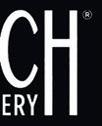




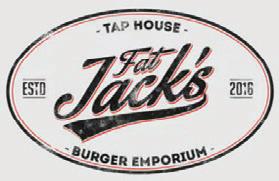

Your neighborhood sports pub: spectacular food, drinks, sports, music, and a fabulous rooftop patio.
Elevated Southern comfort food with a massive wine list.
Great Food! Great People! Vegan Diner, Breakfast All Day, Full Bar, All Made from Scratch.






SALTLAKE CITY,UTAH
Tavern - Can Shop - Pinball 608 West 700 South SALT LAKE CITY
Italian cuisine and wine in an upscale-casual environment.











Exceptional cookie bakery with innovative flavor combinations.
The finest beef on the most luscious brioche bun.
Perfect Spot with Delicious Food, Unique Beers, Craft Cocktails, Music, and Dance.
Fresh authentic and fast.
 DOWNTOWN–SLC
DOWNTOWN–SLC
DOWNTOWN–SLC
SALT LAKE CITY
DOWNTOWN–SLC
DOWNTOWN–SLC
KiiTOS BREWING
SALT LAKE CITY
SALT LAKE CITY
SALT LAKE CITY
DOWNTOWN–SLC
DOWNTOWN–SLC
DOWNTOWN–SLC
SALT LAKE CITY
DOWNTOWN–SLC
DOWNTOWN–SLC
KiiTOS BREWING
SALT LAKE CITY
SALT LAKE CITY
SALT LAKE CITY
“Authentic New York Pizza” Slices... All Day, Every day! villaggio-slc.com










SOUTH SALT LAKE
Casual eatery featuring specialty salads, pizzas, and fresh pasta.
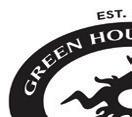


Join us to share laughs and enjoy award-winning beers & pizza!



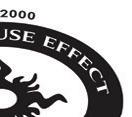
SOUTH SALT LAKE
Rustic-chic cafe. Serving traditional Jewish deli.
Dive in deep with Utah’s finest craft beer.
SOUTH SALT LAKE
Funky, laid-back co eeshop o ering sweet & savory crepes, plus outdoor seating.



Handcrafted, Small Batch Spirits.


SOUTH SALT LAKE
Historic diner in a trolley car serving American fare in a scenic locale with canyon views. EMIGRATION CANYON

Sugar House’s most famous burger joint.
Bringing the spirits of the past alive in your glass.
EDEN
SUGAR HOUSE AUTHENTIC JEWISH CUISINE MILLCREEK MILLCREEK SUGAR HOUSE